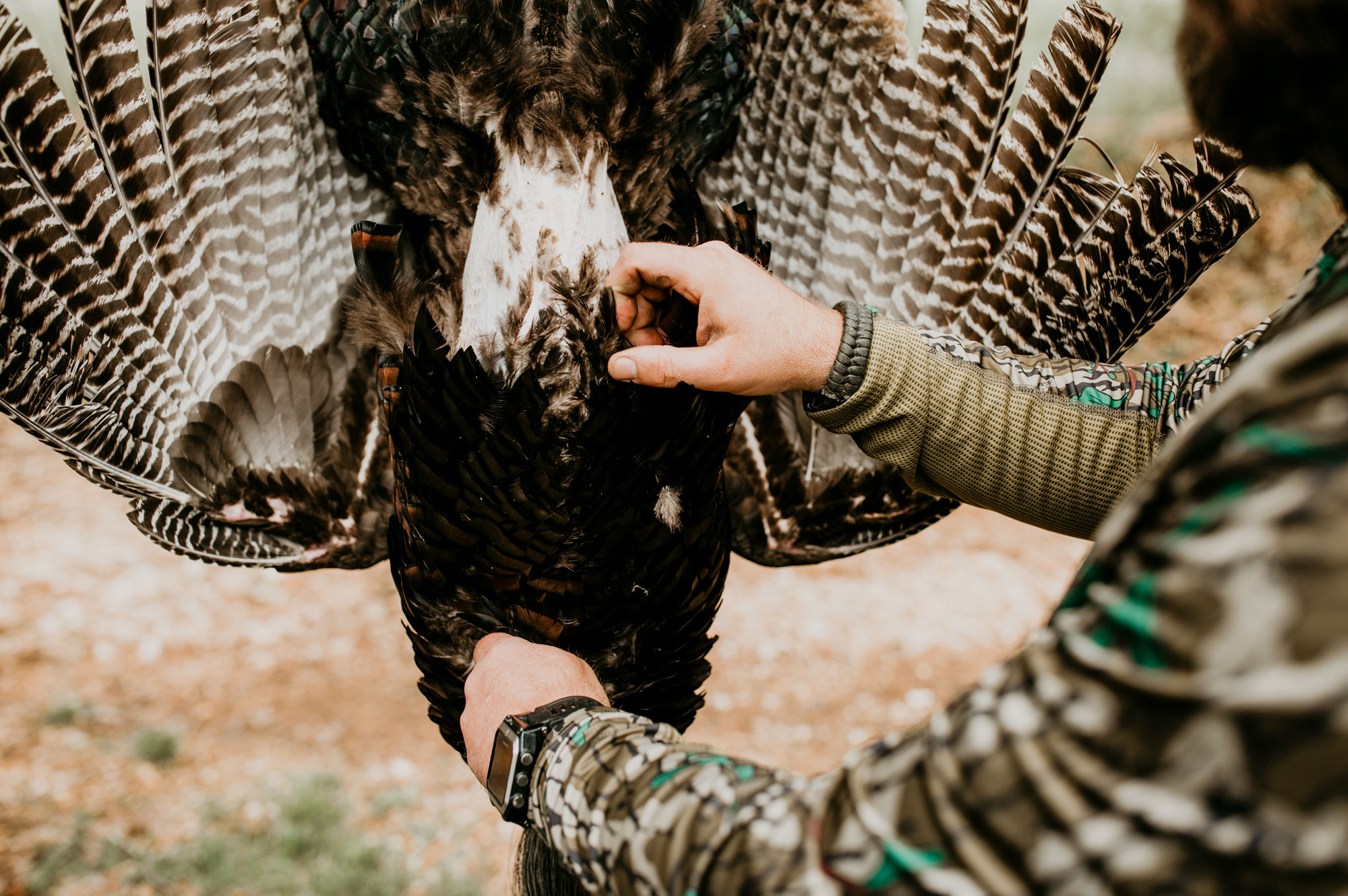How To: Skinning Vs. Plucking
Many hunters spend a lot of time preparing to shoot their first turkey only to be unsure of what to do next once they harvest a bird.
The first thing to keep in mind is that nearly the entire turkey can be used for something. The wing bones can be transformed into turkey calls, the primary wing feathers into arrow fletchings and the secondary wing, tail and body feathers into fishing flies. Christmas wreaths, dry flower arrangements, pins, earrings, necklaces, bolos, blankets, hats and many other items can be fashioned from wild turkey feathers, spurs, beards and bones.
But if cooking is what you have in mind there are two main methods that yield good results: skinning and plucking.
Skinning and quartering
Skinning a wild turkey is easy and, with practice, can take less than three minutes. This method of preparation also reduces the amount of fat and cholesterol that gather in the skin.
- Hang the bird by its head and cut off the wings at the first joint.
- Remove the beard by pulling gently and cutting the loose skin at the base.
- Remove the lower legs by cutting around the joint where the feathers meet the scaly part of the leg.
- Remove the cape next by first inserting a knife into the neck skin where the feathers start on the back of a gobbler's neck.
- Continue the cut down the neck and back following the subtle division between the back and breast feathers.
- Keep cutting until you reach the base of the tail feathers and sever the fan by cutting the fatty tissue known as the "pope's nose." The cape and fan can then be put aside for mounting until the job of butchering is completed.
- Remove the remainder of the turkey's skin by pulling and trimming with a knife where needed. The skin is removed from the legs by rolling it down as far as possible, then severing with a circular cut of the knife.
- Remove the upper wings and legs next by stripping the skin from the carcass, starting at the base of the neck.
- Remove the entrails by cutting from the tail to the tip of the breastbone and cutting around the anus. Using your hand, reach in and pull out the internal organs, trying not to tear them.
- Remove the breast fillets by inserting the knife blade along each side of the keel bone, an extension of the breastbone. Be careful to keep the breast half in one large piece.
Plucking
If you want to keep the skin on the bird and want to try plucking, there are two main methods: wet or dry plucking.
Wet plucking
If a source of nearly boiling water is available, wet plucking is the most effective.
- Dunk the bird head first into the water, submerging it to where the feathers end on the thighs.
- Swish the bird in the bath for 10 seconds and remove.
- Hang the bird from its head and start plucking. Pliers may have to be used for the larger wing feathers.
Dry Plucking
- With no water available, hang the bird head-up and sever the outer wing bones at the joint with a knife.
- Pull the larger feathers out with a pair of pliers and pluck the rest by hand.
- Remove the entrails and wash the body cavity with water.
The last step with either dry or wet plucking is to remove the small, hair-like feathers, or down. This is best done with a flame from either a small propane torch or a torch made from tightly rolled newspaper. The bird's skin should be dry before this process. Lightly run the flame over the bird, being careful not to burn the skin.
For a quick-cleaning method, many hunters simply choose to breast the bird out. Simply cut the beard free as mentioned above and cut the skin along the breastbone. You can then peel the skin away, exposing the breast, the major source of meat on the turkey, and cut them away from the breastbone as described above also.
Whatever method you choose for cleaning your wild turkey should be one you feel most comfortable. Always be careful not to keep your bird exposed to heat too long before processing, and always be safe when handling a sharp knife.
